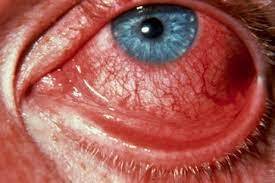Conjunctivitis: Causes, Symptoms, Treatment, and Prevention
Introduction to Conjunctivitis
Conjunctivitis, commonly known as pink eye, is an inflammation of the conjunctiva, the thin, transparent layer of tissue that lines the inner surface of the eyelid and covers the white part of the eye. It is a prevalent eye condition that can affect people of all ages, from infants to the elderly. Conjunctivitis can be caused by various factors, including infections, allergies, and irritants, and it can present with different symptoms depending on the underlying cause.
In this comprehensive guide, we will delve into the various aspects of conjunctivitis, including its causes, symptoms, treatment options, and preventive measures.
Causes of Conjunctivitis
Conjunctivitis can be caused by several factors, including:
1. Bacterial Infection: Bacterial conjunctivitis is often caused by bacteria such as Staphylococcus aureus, Streptococcus pneumoniae, or Haemophilus influenzae. It is highly contagious and can spread through direct contact with contaminated objects or surfaces.
2. Viral Infection: Viral conjunctivitis is commonly associated with adenoviruses, which are highly contagious and can cause outbreaks in schools, daycare centers, and other crowded environments. Viral conjunctivitis can also be caused by herpes simplex virus or varicella-zoster virus.
3. Allergic Reaction: Allergic conjunctivitis occurs when the conjunctiva reacts to allergens such as pollen, dust mites, pet dander, or certain chemicals. It is characterized by itching, redness, and watery discharge and is not contagious.
4. Irritants: Chemicals, pollutants, smoke, or foreign objects can irritate the eyes and lead to conjunctivitis. This type of conjunctivitis is non-infectious and usually resolves once the irritant is removed.
5. Contact Lenses: Improper use, poor hygiene, or allergic reactions to contact lens solutions can cause contact lens-related conjunctivitis, also known as giant papillary conjunctivitis (GPC). GPC is characterized by inflammation and discomfort, particularly when wearing contact lenses.
Symptoms of Conjunctivitis
The symptoms of conjunctivitis can vary depending on the underlying cause but often include:
1. Redness in the white part of the eye or inner eyelid
2. Watery or mucous discharge
3. Itching or burning sensation
4. Gritty feeling in the eyes
5. Sensitivity to light (photophobia)
6. Swollen eyelids
7. Blurred vision
8. Crusting or sticking together of eyelids, especially in the morning (more common in bacterial conjunctivitis)
It is essential to consult a healthcare professional if you experience persistent or severe symptoms, as they can help determine the cause of conjunctivitis and recommend appropriate treatment.
Diagnosis of Conjunctivitis
Diagnosing conjunctivitis typically involves a comprehensive eye examination, including a review of symptoms and medical history. In some cases, additional tests may be necessary to determine the underlying cause of conjunctivitis, such as:
1. Conjunctival Swab: A swab of the conjunctiva may be taken to test for bacterial or viral infections.
2. Allergy Testing: Allergy testing may be recommended if allergic conjunctivitis is suspected. This may involve skin prick tests or blood tests to identify specific allergens.
3. Fluorescein Staining: Fluorescein staining is used to detect corneal abrasions or ulcers, which may occur in severe cases of conjunctivitis.
Treatment of Conjunctivitis
The treatment of conjunctivitis depends on the underlying cause and may include:
1. Bacterial Conjunctivitis: Antibiotic eye drops or ointments are often prescribed to treat bacterial conjunctivitis. It is essential to complete the full course of antibiotics as prescribed by a healthcare professional to prevent recurrence and antibiotic resistance.
2. Viral Conjunctivitis: Viral conjunctivitis usually resolves on its own within a few days to a week. Over-the-counter lubricating eye drops or cold compresses may help alleviate symptoms. In some cases, antiviral medications may be prescribed for severe or prolonged viral conjunctivitis.
3. Allergic Conjunctivitis: Avoiding allergens and using antihistamine eye drops or oral medications can help manage allergic conjunctivitis. In severe cases, corticosteroid eye drops may be prescribed for short-term use to reduce inflammation.
4. Irritant Conjunctivitis: Avoiding exposure to irritants and using lubricating eye drops can help relieve symptoms of irritant conjunctivitis. In some cases, a healthcare professional may recommend flushing the eyes with saline solution to remove foreign particles or chemicals.
5. Contact Lens-Related Conjunctivitis: Discontinuing the use of contact lenses and practicing good hygiene, including cleaning and disinfecting lenses properly, can help prevent and manage contact lens-related conjunctivitis. Switching to daily disposable lenses or changing contact lens solutions may also be recommended.
Prevention of Conjunctivitis
Preventing conjunctivitis involves practicing good hygiene and taking precautions to avoid exposure to infectious agents or allergens. Some preventive measures include:
1. Wash Hands Frequently: Wash hands thoroughly with soap and water, especially before touching the eyes or face, to prevent the spread of bacteria and viruses.
2. Avoid Touching Eyes: Avoid rubbing or touching the eyes, as this can transfer infectious agents from the hands to the eyes.
3. Avoid Sharing Personal Items: Do not share towels, pillowcases, eye makeup, or other personal items with individuals who have conjunctivitis to prevent the spread of infection.
4. Practice Good Contact Lens Hygiene: Follow proper hygiene practices when wearing contact lenses, including washing hands before handling lenses, disinfecting lenses regularly, and replacing them as recommended by a healthcare professional.
5. Allergen Avoidance: Minimize exposure to allergens by keeping windows closed during high pollen seasons, using air purifiers, and avoiding outdoor activities during peak pollen times.
Conclusion
Conjunctivitis is a common eye condition that can be caused by infections, allergies, irritants, or contact lens-related factors. While most cases of conjunctivitis are mild and resolve on their own, some may require medical treatment to alleviate symptoms and prevent complications. Practicing good hygiene, avoiding allergens and irritants, and following proper contact lens hygiene can help prevent conjunctivitis and reduce the risk of recurrence. If you experience persistent or severe symptoms of conjunctivitis, consult a healthcare professional for an accurate diagnosis and appropriate treatment.


